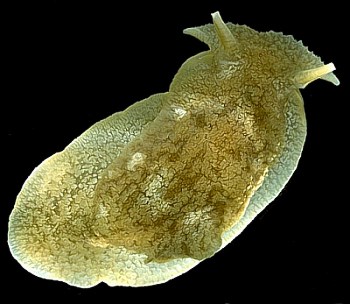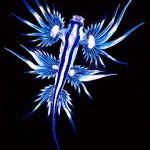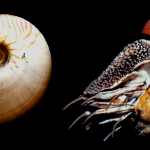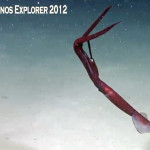[EDIT: Except the slugs are in New Zealand, not Australia – brain fail! Sorry to all Down Under. See comments below for an invigorating discussion of who is more toxic.]
 The very fate of Australia hinges on the shenanigans of slutty sea slugs. Ok, maybe not the fate of an entire continent, but certainly the unfortunate end of two dogs. The sea slugs, Pleurobranchaea maculata, inhabit shallow waters and occasionally wash up on beaches, which wouldn’t be bad for anyone but the slugs. Except that the slugs are filled with the neurotoxin tetrodotoxin (the same as pufferfish and the blue-ringed octopus). You’d think the Australians would be used to little poisonous things, but apparently having 4 inch deadly slugs all over the beach is worrisome even there.
The very fate of Australia hinges on the shenanigans of slutty sea slugs. Ok, maybe not the fate of an entire continent, but certainly the unfortunate end of two dogs. The sea slugs, Pleurobranchaea maculata, inhabit shallow waters and occasionally wash up on beaches, which wouldn’t be bad for anyone but the slugs. Except that the slugs are filled with the neurotoxin tetrodotoxin (the same as pufferfish and the blue-ringed octopus). You’d think the Australians would be used to little poisonous things, but apparently having 4 inch deadly slugs all over the beach is worrisome even there.
The key to determining why the slugs are increasing? They may be feeding on an invasive mussel, but that’s not the focus of the study. According to Paul Rainey, the researcher leading a new study:
“We want to find out who the slugs are having sex with,” Professor Rainey says. “Is it with their neighbors, or out-of-towners.”






The Underwater Times story is about Auckland (New Zealand), not Australia.
Australia!!?!? Those slutty sea slugs are good, honest New Zealand pleurobranchids!
Sorry, I’m betraying the little brother syndrome a little too strongly ;)
(perhaps a couple of posinous slugs on the beach wouldn’t be enough to excite Australians, but New Zealand only has one seriously poisonous terrestrial creature (a native widow spider called the katipo) so people are more easily excited by these things)
T’other side of the Tasman!
It’d be quite handy if the sea slugs cleaned up the Musculista.
David, don’t feel deprived about the paucity of lethally venomous animals. NZ has those wonderful wetas and giant carnivorous snails. What they lack in toxins, they make up for in attitude.
Ahhh! My apologies! I was reading about the same slug in Australia and clearly wires in my brain got crossed.
Hello DSN crew (and now, readers) – I have been trying to use the email fields to ask the question below but it won’t go past the spam filter. So, here it is as a comment in an unrelated article.
I’m a herpetologically oriented grad student who recently visited the Bay of Fundy while attending a conference. My lab mates and I found a mop-like jelly like mass on the tidal flats. Being inland herpetologists we weren’t able to figure out what we were looking at. We took some pictures (see here ). The jelly strings contained tiny white larvae with two dark eye spots on the anterior end. They were about 1.5mm long. They kind of looked like tiny grains of rice with little salamander faces. Could someone at DSN please give us a clue about what they are. My guess is some sort of crustacean (but no apparent appendages) although I had the impression that most marine crustaceans had tiny free swimming larvae. Maybe a mollusk? Ok, actually, my money is on gastropoda.
Thanks
Matt